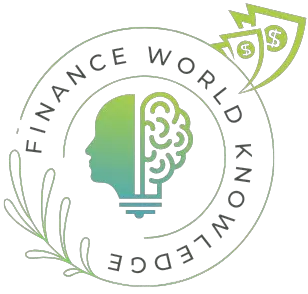
“Navigating the Algorithmic Seas: Decoding the Depths of Algorithmic Trading Strategies in Modern Finance”
Introduction:
In the ever-evolving landscape of financial markets, Algorithmic Trading, commonly known as algo trading, has emerged as a pivotal force reshaping the way transactions are executed. This article aims to provide a comprehensive exploration of algo trading, delving into its origins, underlying principles, strategies, and the transformative impact it has had on the financial industry.
Origins of Algorithmic Trading:
Algorithmic trading has its roots in the 1970s when financial markets began adopting electronic trading platforms. The shift from floor trading to electronic exchanges paved the way for the development of algorithms designed to automate trade execution. Initially, these algorithms were relatively simple, but over the decades, they evolved into sophisticated systems capable of complex decision-making in real-time.
Understanding Algorithmic Trading:
At its core, algorithmic trading involves the use of computer programs to execute trading strategies. These programs, often referred to as algorithms, analyze market data, identify patterns, and execute trades at speeds impossible for human traders. Algo trading encompasses a wide array of strategies, ranging from simple ones like trend following to complex high-frequency trading strategies.
Key Components of Algorithmic Trading:
Data Analysis:
Algo trading relies heavily on data analysis. Market data, including price movements, trading volumes, and order book data, is processed in real-time to inform trading decisions. Advanced algorithms utilize historical data to identify patterns and trends that can be exploited for profit.
Algorithm Design:
The heart of algo trading lies in the design of sophisticated algorithms. These algorithms are crafted to execute specific trading strategies efficiently. Traders and quantitative analysts work collaboratively to create algorithms that can adapt to dynamic market conditions.
Risk Management:
Effective risk management is paramount in algo trading. Algorithms are designed to assess and manage risk in real-time. This includes setting stop-loss levels, monitoring portfolio exposure, and dynamically adjusting trading parameters to mitigate potential losses.
Execution Strategies:
Algo trading employs various execution strategies based on the desired outcomes. Market orders, limit orders, and stop orders are executed automatically, optimizing trade execution and minimizing slippage.
Backtesting:
Before deploying algorithms in live markets, they undergo rigorous backtesting. Historical data is used to simulate how the algorithm would have performed in the past. This process helps refine and optimize algorithms for future market conditions.
Connectivity to Marketplaces:
Algo trading systems require seamless connectivity to financial exchanges. Fast and reliable connections are essential for executing trades at the desired prices and speeds. Many algo trading firms invest heavily in technology infrastructure to minimize latency.
Machine Learning Integration:
Modern algo trading systems increasingly incorporate machine learning techniques. These systems can adapt and learn from market data, enhancing their ability to identify patterns and make more informed trading decisions.
Strategies in Algorithmic Trading:
Trend Following:
Algo trading strategies often involve identifying and capitalizing on market trends. Trend-following algorithms analyze historical price data to identify and ride existing trends, aiming to profit from sustained price movements.
Arbitrage:
Arbitrage strategies exploit price discrepancies between different markets or financial instruments. Algo trading algorithms execute trades quickly to capture these fleeting opportunities, ensuring that prices align across different platforms.
Market Making:
Market-making algorithms provide liquidity by continuously quoting buy and sell prices. These algorithms profit from the bid-ask spread and aim to facilitate smooth and efficient trading in the market.
Statistical Arbitrage:
Statistical arbitrage involves using statistical models to identify mispricings in securities. Algo trading algorithms analyze historical relationships between different assets and execute trades when deviations from these relationships occur.
High-Frequency Trading (HFT):
HFT strategies involve executing a large number of orders at extremely high speeds. These algorithms capitalize on small price inefficiencies and market imbalances, often holding positions for very short durations.
Mean Reversion:
Mean-reverting strategies assume that prices will eventually revert to their historical averages. Algo trading algorithms identify situations where prices deviate significantly from historical norms and execute trades anticipating a return to the mean.
Impact of Algorithmic Trading:
Market Liquidity:
Algorithmic trading has significantly increased market liquidity. Market-making algorithms, in particular, contribute to the availability of buy and sell orders, making it easier for traders to execute their transactions.
Efficiency and Speed:
Algo trading has drastically improved the efficiency and speed of trade execution. With algorithms capable of executing trades in milliseconds, financial markets operate at a pace unimaginable in traditional manual trading.
Reduced Transaction Costs:
The automation of trading processes has led to a reduction in transaction costs. Algo trading algorithms can identify the most cost-effective ways to execute trades, minimizing slippage and optimizing order execution.
Increased Accessibility:
Algo trading has democratized access to financial markets. Retail traders and smaller financial institutions can now leverage algorithmic trading strategies that were once the exclusive domain of large institutional players.
Market Fragmentation:
The rise of algorithmic trading has contributed to market fragmentation. With trades executed across various electronic platforms, markets are no longer centralized, leading to new challenges and opportunities for participants.
Volatility:
While algorithmic trading has contributed to market efficiency, it has also been implicated in episodes of increased market volatility. Flash crashes and rapid price fluctuations have raised concerns about the impact of high-frequency trading on overall market stability.
Conclusion:
Algorithmic trading has undeniably transformed the financial landscape, introducing unprecedented speed, efficiency, and accessibility. The marriage of advanced technology, data analysis, and quantitative strategies has reshaped how trades are executed, challenging traditional trading paradigms. As technology continues to evolve, the future of algo trading promises further innovations, presenting both opportunities and challenges for market participants.
Frequently Asked Questions (FAQs):
What is algorithmic trading?
Algorithmic trading involves using computer programs (algorithms) to execute predefined trading strategies automatically. These algorithms analyze market data, identify patterns, and execute trades at speeds impossible for human traders.
How did algorithmic trading originate?
The origins of algorithmic trading can be traced back to the 1970s when financial markets began adopting electronic trading platforms. The shift from floor trading to electronic exchanges paved the way for the development of algorithms designed to automate trade execution.
What are the key components of algorithmic trading?
Key components include data analysis, algorithm design, risk management, execution strategies, backtesting, connectivity to marketplaces, and increasingly, the integration of machine learning techniques.
What are some common algorithmic trading strategies?
Common strategies include trend following, arbitrage, market making, statistical arbitrage, high-frequency trading (HFT), and mean reversion.
How does algorithmic trading impact market liquidity?
Algorithmic trading significantly increases market liquidity, especially through market-making algorithms that continuously quote buy and sell prices, facilitating smooth and efficient trading.
How has algorithmic trading affected transaction costs?
Algorithmic trading has led to a reduction in transaction costs by optimizing trade execution, minimizing slippage, and identifying the most cost-effective ways to execute trades.
What is the role of machine learning in algorithmic trading?
Machine learning is increasingly integrated into algorithmic trading systems. These systems can adapt and learn from market data, enhancing their ability to identify patterns and make more informed trading decisions.
Has algorithmic trading increased market volatility?
While algorithmic trading has contributed to market efficiency, it has also been implicated in episodes of increased market volatility. Flash crashes and rapid price fluctuations have raised concerns about the impact of high-frequency trading on overall market stability.
How does algorithmic trading impact retail traders?
Algorithmic trading has democratized access to financial markets, allowing retail traders and smaller financial institutions to leverage strategies that were once the exclusive domain of large institutional players.
What does the future hold for algorithmic trading?
The future of algorithmic trading promises further innovations as technology continues to evolve. This includes advancements in machine learning, increased automation, and the ongoing adaptation of strategies to dynamic market conditions.







Leave a Reply